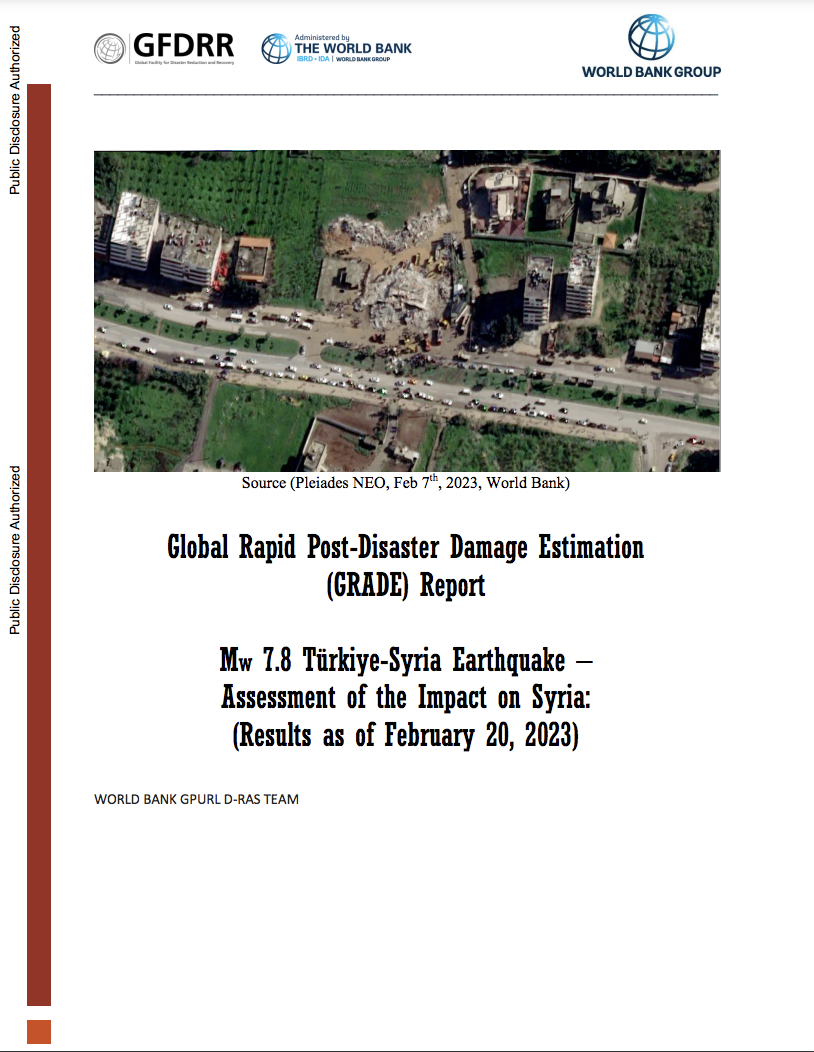Following the magnitude (Mw) 7.8 Türkiye-Syria Earthquake on February 6, 2023 and the Mw 6.3 earthquake on February 20, 2023, the World Bank carried out a remote, desk-based assessment of the physical damages in Syria using the Global RApid post-disaster Damage Estimation (GRADE) methodology.
The objective of the assessment is to develop a model-based estimate of the direct physical damages to residential buildings (houses) and non-residential buildings caused by the event, and to evaluate the spatial distribution of damages. The analysis does not evaluate the impact on loss in terms of economic flows (e.g. production or business interruption, as might be included in a Rapid Damage and Needs Assessment - RDNA); it only assesses direct damage to capital stock. It is expected that an RDNA will follow this analysis.
The objective of this report is to provide an estimate of the direct damage costs caused by these earthquakes. The report is based on a rapid and remote post-disaster damage assessment that follows the established GRADE methodology, which benefited from a range of data including: government damage data and reports; simulation of earthquake ground motion through hazard modelling that was verified against instrumental strong ground motion recordings; buildings and infrastructure exposure database and capital stock information; analysis of current unit costs of construction in Syria; and structural vulnerability analysis. GRADE is intended as a rapid remote estimate in a short timeframe to inform early decision-making, and is not intended as a substitute for detailed, on-the-ground analysis which may be additionally conducted in the weeks/months to come.
The GRADE assessment should be interpreted as a first-order direct damages estimation, albeit with a significant degree of reliability. However, GRADE’s outputs are still estimates; remote-based calculations that are influenced and updated from available ground-based data. While there is confidence in the overall economic estimates and distribution of damage, the confidence level at the individual asset level is very low. Furthermore, GRADE results do not include the losses and needs that are also crucial for the comprehensive understanding of the impact of the disaster.

